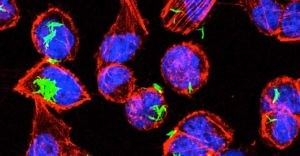AACR18 Day 2 Highlights

The lull before the Monday storm hits…
One of the highlights every year at the annual meeting of the American Association for Cancer Research (AACR) for me is catching up on new product development and finding out which molecules are moving along and which have encountered unexpected issues and most importantly, why. Drug development is an inexact science, after all, and sometimes it is more akin to art.
Sometimes you hear of a promising new or very early molecule in these sessions and follow them all the way to the market, while other times they get touted as such and then flame and burn out later. Some years are also better than others, for obvious reasons.
How did 2018 turn out? What’s to watch out for this time around? A couple of years ago we had a dismal session here with the majority of agents clearly destined to the scrapheap and the poor researcher was dutifully performing the office of last rites. This year I’m pleased to say was quite different and there was much to be encouraged by…
To learn more and get a heads up on our latest oncology insights, subscribers can log-in or you can click to gain access to BSB Premium Content.
This content is restricted to subscribers






